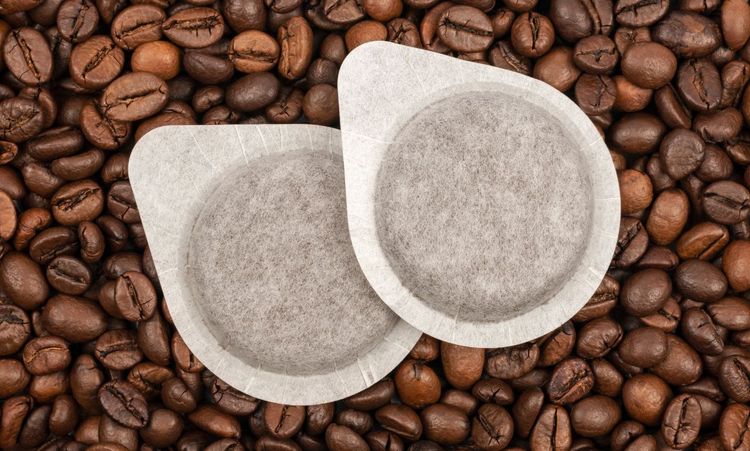While fad diets come and go, the power of proteins for weight loss remains a consistent champion in the world of healthy living. But this isn't about simply adding a protein shake to your routine and calling it a day. It's about understanding how protein interacts with your body, how to choose the right sources, and how to seamlessly integrate it into your lifestyle for sustainable, long-term results.
This is about empowering you with the knowledge to make informed decisions, to break free from restrictive diet plans, and to develop a healthy relationship with food that fuels your body and mind.
Let's dive in.
Benefits of Protein for Weight Loss
Protein isn't just a buzzword in the fitness world; it's a fundamental macronutrient that plays a vital role in countless bodily functions. When it comes to weight loss, protein steps up as a powerful ally, offering a unique set of benefits that extend far beyond simply building muscle.
1. Conquer Cravings

Protein takes longer to digest than carbohydrates, leading to a prolonged feeling of fullness and satisfaction. This means you're less likely to reach for unhealthy snacks between meals or overeat during your next meal. But it doesn't stop there.
Protein directly influences the hormones that regulate hunger and appetite. It increases the production of hormones like peptide YY (PYY) and cholecystokinin (CCK), which signal to your brain that you're full and satisfied. Simultaneously, it reduces the levels of ghrelin, the "hunger hormone," effectively curbing those cravings that can sabotage your progress.
The Science Behind It:
- Slower Gastric Emptying: Protein slows down the rate at which food empties from your stomach, keeping you feeling fuller for longer.
- Hormonal Regulation: Protein directly impacts hormones that control hunger and satiety, leading to a natural reduction in appetite.
2. Sculpt Your Physique
Losing weight doesn't automatically equate to a toned physique. In fact, rapid weight loss can often lead to muscle loss, which can negatively impact your metabolism and body composition. This is where protein becomes your secret weapon.
Protein is the building block of muscle tissue. When you consume adequate protein, especially when combined with strength training, you provide your body with the essential amino acids it needs to repair and build muscle. This is crucial not only for achieving a toned physique but also for boosting your metabolism.
Muscle is metabolically active tissue, meaning it burns more calories at rest than fat. By preserving and building lean muscle mass, you effectively increase your resting metabolic rate, allowing your body to burn more calories even when you're not actively working out.
The Science Behind It:
- Muscle Protein Synthesis: Protein provides the essential amino acids needed for muscle repair and growth, particularly after exercise.
- Increased Thermic Effect: Protein has a higher thermic effect of food (TEF) compared to carbohydrates and fats, meaning your body expends more energy to digest and process it.
3. Ignite Your Inner Furnace
Imagine your metabolism as an internal furnace, constantly burning calories to fuel your body's functions. Protein acts like kindling, effectively stoking the fire and increasing your calorie expenditure throughout the day.
As mentioned earlier, protein has a higher thermic effect of food (TEF) compared to carbohydrates and fats. This means that your body burns more calories to digest, absorb, and metabolize protein. Studies have shown that consuming a high-protein diet can increase your TEF by 15-30%, compared to a lower-protein diet.
This boost in metabolism translates to a greater number of calories burned, even at rest, ultimately aiding in your weight loss journey.
The Science Behind It:
- Thermic Effect of Food (TEF): Protein requires more energy for digestion and processing, leading to a higher calorie burn.
- Gluconeogenesis: When your carbohydrate intake is low, your body can use protein to create glucose for energy, a process that also burns calories.
High-Protein Foods to Include in Your Diet
Now that you understand the incredible benefits of proteins for weight loss, let's explore the delicious and diverse world of protein-rich foods that you can easily incorporate into your daily meals.
1. Animal-Based Powerhouses
- Lean Meats: Chicken breast, turkey breast, lean ground beef, bison, and venison are excellent sources of protein while being relatively low in fat.
- Fish and Seafood: Salmon, tuna, cod, shrimp, and scallops are not only packed with protein but also rich in omega-3 fatty acids, which offer numerous health benefits.
- Eggs: A versatile breakfast staple, eggs are a complete protein source, meaning they contain all nine essential amino acids.
- Dairy Products: Greek yogurt, cottage cheese, and low-fat milk provide a good dose of protein along with calcium and other essential nutrients.
2. Plant-Based Champions
- Legumes: Lentils, chickpeas, black beans, and kidney beans are excellent sources of plant-based protein and fiber, making them incredibly filling and satisfying.
- Tofu and Tempeh: Made from soybeans, tofu and tempeh are versatile meat alternatives that can be used in a variety of dishes.
- Nuts and Seeds: Almonds, cashews, chia seeds, and flaxseeds are packed with protein, healthy fats, and fiber, making them perfect for snacks or adding to smoothies.
- Quinoa: A complete protein source, quinoa is a delicious and nutritious grain that can be used in salads, soups, or as a side dish.
Tips for Incorporating More Protein into Your Meals
Now that you're equipped with the knowledge of proteins for weight loss, let's explore practical and delicious ways to seamlessly incorporate more protein into your daily meals and snacks.
1. Power Up Your Mornings
- Greek Yogurt Parfait: Layer Greek yogurt with berries, nuts, and a drizzle of honey for a protein-packed and satisfying breakfast.
- Scrambled Eggs with Veggies: Add chopped vegetables like spinach, mushrooms, and bell peppers to your scrambled eggs for a boost of nutrients and flavor.
- Protein Pancakes: Swap out regular pancake mix for a protein pancake mix or add a scoop of protein powder to your batter.
2. Fuel Your Afternoon
- Big Salads with Protein: Top a bed of greens with grilled chicken breast, salmon, tofu, or legumes for a filling and nutritious lunch.
- Soup and Sandwich Combo: Pair a hearty lentil soup or black bean soup with a whole-grain sandwich on high-protein bread.
- Leftovers for the Win: Don't underestimate the power of leftovers! Pack yesterday's protein-rich dinner for a quick and easy lunch.
3. Smart Snacking and Guilt-Free Treats

- Hard-Boiled Eggs: A classic snack that's portable and packed with protein.
- Trail Mix: Make your own trail mix with nuts, seeds, and a few dark chocolate chips for a healthy and satisfying snack.
- Protein Bars: Choose protein bars with minimal added sugar and a good balance of protein, carbohydrates, and fats.
- Greek Yogurt Bark: Spread Greek yogurt on a baking sheet, sprinkle with berries and nuts, and freeze for a refreshing and protein-rich treat.
Conclusion
You've embarked on a journey to understand the power of proteins for weight loss, and you're now equipped with the knowledge to make informed choices that align with your goals. Remember, this isn't about restrictive diets or quick fixes; it's about embracing a sustainable lifestyle that nourishes your body and supports your overall well-being.
By prioritizing protein-rich foods, you're not just fueling your weight loss journey; you're investing in your long-term health and vitality.




